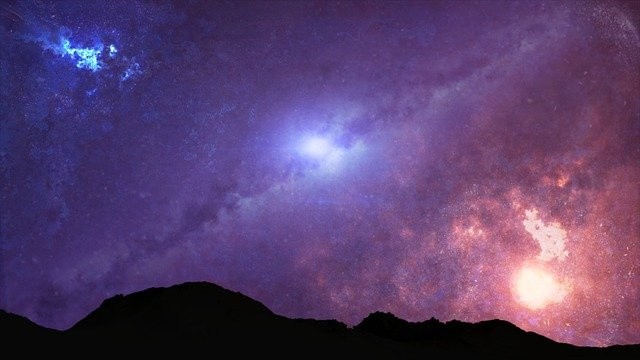
The space industry and professional and amateur astronomers alike are devastated by the collapse of the Arecibo observatory’s giant radio telescope, which was vital in many space discoveries. But despite that, Aussie astronomers have reason to be delighted with the discovery of two strange space phenomenon with the help of the Commonwealth Scientific and Industrial Research Organization’s (CSIRO) revolutionary Australian Square Kilometer Array Pathfinder (ASKAP) telescope.
The Discovery of ORCs
According to a report by Newshub, the images were first found in September 2019 by Anna Kapinska and Emil Lenc, scientist from the Western Sydney University.
Ray Norris, a professor of Western Sydney University School of Science and creator of ASKAP, wrote an article for The Conversation, saying that the first image by Kapinska were strange shapes the astronomers can't quite put under any category of known cosmic object, specifically a "ghostly circle of radio emission" that was simply hanging around in space.
Meanwhile, Lenc's captured a similar image as Kapinska's, only spookier, just a few days after.
The discoveries are named as ORCs, which stand for "odd radio circles."
Also Read: Famed Arecibo Telescope Collapses: People Mourn as Earth Now More Vulnerable to Space Rocks
The Revolutionary ASKAP Telescope
These ORCs would not be possible without the help of the ASKAP telescope, which the astronomers use for the Evolutionary Map of the Universe (EMU) project.
EMU plans to "boldly probe parts of the Universe where no telescope has gone before," and the astronomers can do all that with the help of the ASKAP telescope, which is especially sensitive to faint and diffuse objects like the ORCs they have previously discovered.
The ASKAP telescope is quite powerful as it can survey massive swathes of space much faster, plus it can probe deeper than was previously reached by other space telescopes.
It is currently based at the Murchison Radio-astronomy Observatory (MRO).
Strange sky phenomena dubbed 'ORCs' and 'WTFs' could be wormholes in space https://t.co/lXseScqwki
— Newshub (@NewshubNZ) December 4, 2020
NewshubNZ
The telescope itself is made from 36 12-meter wide dish antennas -all similar and currently in operation--work together to capture areas in space.
ASKAP is also connected to more than 30 antennas which are fitted with specialized phased array feeds that were initially installed in 2017 and are able to churn 5.2 terabytes of data per second, or equals to around 15% of the current speed of the usual internet data.
Moreover, CSIRO's telescope could see a massive piece of the sky with a 30 square degrees field of view.
What ORCs Are Not
As of now, the astronomers are still uncertain of the origin of the ORCs they have discovered using ASKAP telescope, or know what exactly those odd circles, meaning that the scientists would have to spend more time to determine the real story behind the radio circles.
Nevertheless, these Australian scientists know what these ORCs are not: they are not supernova remnants nor rings of radio emmission that can be seen on galaxies that are forming new stars, or are they radio emissions in radio galaxies, or even Einstein rings based on their investigation.
The group of astronomers have published their papers in the Publications of the Astronomical Society of Australia, where they explain the possibilities of the discoveries.
This article is owned by Tech Times
Written by: Nhx Tingson





